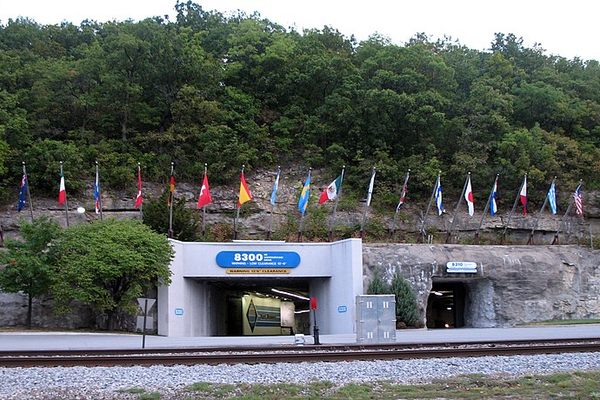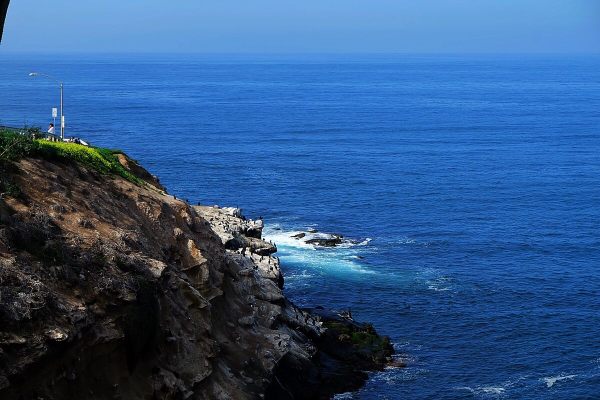Beneath Brazil Are Cave Formations as Otherworldly as Another Planet
Inside Brazil’s Caverna da Torrinha (photograph by Coen Wubbels)
Stalagmites and stalactites are common calcium salt formations in caves. But have you ever heard of helictites? Needles of gypsum? Aragonitas? Bolas?
Each of these formations can be found elsewhere in the world, but Caverna da Torrinha is one of Brazil’s most complete limestone caves considering the richness and diversity of its speleothems (cave formations), making it a fascinating place to visit. It is also one of the world’s largest caves.
Gruta da Torrinha, as it is also called, lies just north of Chapada da Diamantina National Park, 450 kilometers west of Salvador da Bahia. Until 1992, only one cave of the Caverna da Torrinha complex was known to the surrounding inhabitants. Rock paintings near the entrance of that cave are testimony to indigenous people who once inhabited the area.
When a French speleologist with Meanders Speleological Group investigated this chasm, she set down her lantern to take a rest. The flame flickered, betraying a current of air coming from a narrow passage between fallen blocks. It gave access to a much vaster underground area, of which only some 14,000 meters have been mapped.
Sign for Caverna da Torrinha (photograph by Coen Wubbels)
Rock painting at the entrance (photograph by Coen Wubbels)
View underground (photograph by Coen Wubbels)
By clambering over the same boulders as the French speleologist once did, and wriggling your way through the narrow passage, you will get to the two adjacent caves — together with a mandatory guide who will bring a lantern and provide you with a helmet. The caving requires physical fitness and a moderate degree of limberness. The four-hour tour includes quite a bit of walking, often with bent heads for those taller than 1.70m (about 5.6 feet). It is most certainly no trip for claustrophobics.
One of the most impressive — if not somewhat terrifying — moments is when the guide asks you to sit down and be quiet for a minute. He turns down the gas lamp, and all of a sudden you feel how you are in the bowels of the Earth, cut off from any noise or light. For me, it was the closest experience of what the world must be like when being deaf and blind. In fact, it took me an effort not to panic. I focused on my breathing, relaxed my muscles, and allowed the silence to penetrate my being. Suddenly the moment was no longer scary, nor beautiful. It was perfect.
Inside the caverns (photograph by Coen Wubbels)
Stalactites on a low ceiling (photograph by Coen Wubbels)
Inside the caverns (photograph by Coen Wubbels)
In the region, more than 200 caves have been discovered, five of which are open to the public. Some are under scientific research, and it is assumed that many, if not all, caves are the remaining proof of a river that once flowed here. Nowadays most of the caves are dry, while some have underground lakes.
Ten meters (about 33 feet) under the Torrinha Cavern, a new underground river was discovered. It may be that all of the caves are still connected; it may be a matter of finding the passages. While the first cave is home to general stalagmite and stalactite formations, the true gems lie in these deeper hidden caves. Through the second cave meanders a 1,500-meter path, featuring an aragonite flower and gypsum needles. The third cave is a major hall of 100 by 200 meters, home to helicitite and an aragonite flower in a bola.
Stalactites (photograph by Coen Wubbels)
The cavern illuminated by lantern (photograph by Coen Wubbels)
Stalagmites & stalactites (photograph by Coen Wubbels)
Helictite (photograph by Coen Wubbels)
A helictite is a distorted form of stalactite. The cave formation changes its axis during its growth, defying gravity by the force of crystallization of the mineral, often growing in curving or angular forms (contrary to a stalactite, which hangs like an icicle from the roof, or a stalagmite, which rises as a column from the floor). It is still a mystery as to how they are generated, although there are several hypotheses (such as the formation of capillary forces, impurities in the deposited calcite, and/or air currents).
Aragonite (photograph by Coen Wubbels)
The aragonite flower (shown above) is unique in the world. The world’s second largest of the rare speleothem grows in the Caverna da Torrinha. The formation of calcium carbonate resembles a flower, hence its name. This cave features a helictite with an aragonite flower on its tip, which has become the symbol of this cave, as well as of all other caverns in the region.
Aragonite (photograph by Coen Wubbels)
Bola (photograph by Coen Wubbels)
A bola (ball) is an uncommon, brittle structure of calcite that looks like an eggshell. In it grows an aragonite flower. One bola in this cave is still open, and the flower is visible; the second known bola is closed, and scientists speculate whether there is a flower inside it as well.
At the deepest point of the cave are needles of gypsum (calcium sulfate), thin blades of gypsum that look like needles, which radiate from clusters on the floor of the cave. From a distance it looks as if somebody has strewn about narrow metal needles on some dry clay. The needles, straight and four inches long on average, would break almost immediately if you touched them. In Caverna Torrinha grow the world’s largest gypsum needles at 25 inches long.
Gypsum needles (photograph by Coen Wubbels)
Stalactites & stalagmites (photograph by Coen Wubbels)
There are two ways to visit the cave (there is no public transport going there): Drive up there independently, or rent a car in Lençois, drive to Iraquara, and ask for directions. The cave’s owner is Eduardo Figueiredo da Silva and he can provide you with a guide. You could also email or call him beforehand (recommended when you want an English speaking guide). Tel. 75-364-2488 / cavernatorrinha@ig.com.br. You can book a guided tour with one of the travel agencies in Lençois (inside Chapada da Diamantina National Park). The maximum size of a group is six, the cave is open daily from 9am to 6pm, and the price depends on which caves you want to visit.























Follow us on Twitter to get the latest on the world's hidden wonders.
Like us on Facebook to get the latest on the world's hidden wonders.
Follow us on Twitter Like us on Facebook